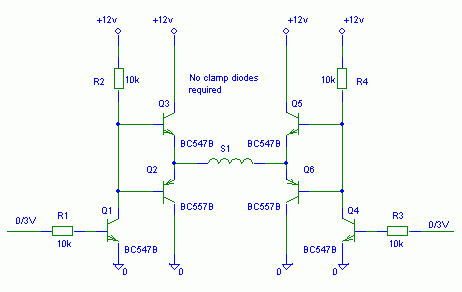Zedman
Full Member level 6

Hi,
I would like to use this relay: PE014A12 (tyco electronics)
It has only 1 coil and it has to be driven + / - to switch on and - / + to switch off, the question would be how to do it simply and small?
I tought I should use 4 transistors as a H Bridge like thing as used for motors, but use FETs instead?
What type of protector to use here? I used to put in a 1N4001 in parallel with the coil but that won't work here.
I have an MCU output level to control the relay.
thanks,
Zedman
I would like to use this relay: PE014A12 (tyco electronics)
It has only 1 coil and it has to be driven + / - to switch on and - / + to switch off, the question would be how to do it simply and small?
I tought I should use 4 transistors as a H Bridge like thing as used for motors, but use FETs instead?
What type of protector to use here? I used to put in a 1N4001 in parallel with the coil but that won't work here.
I have an MCU output level to control the relay.
thanks,
Zedman





